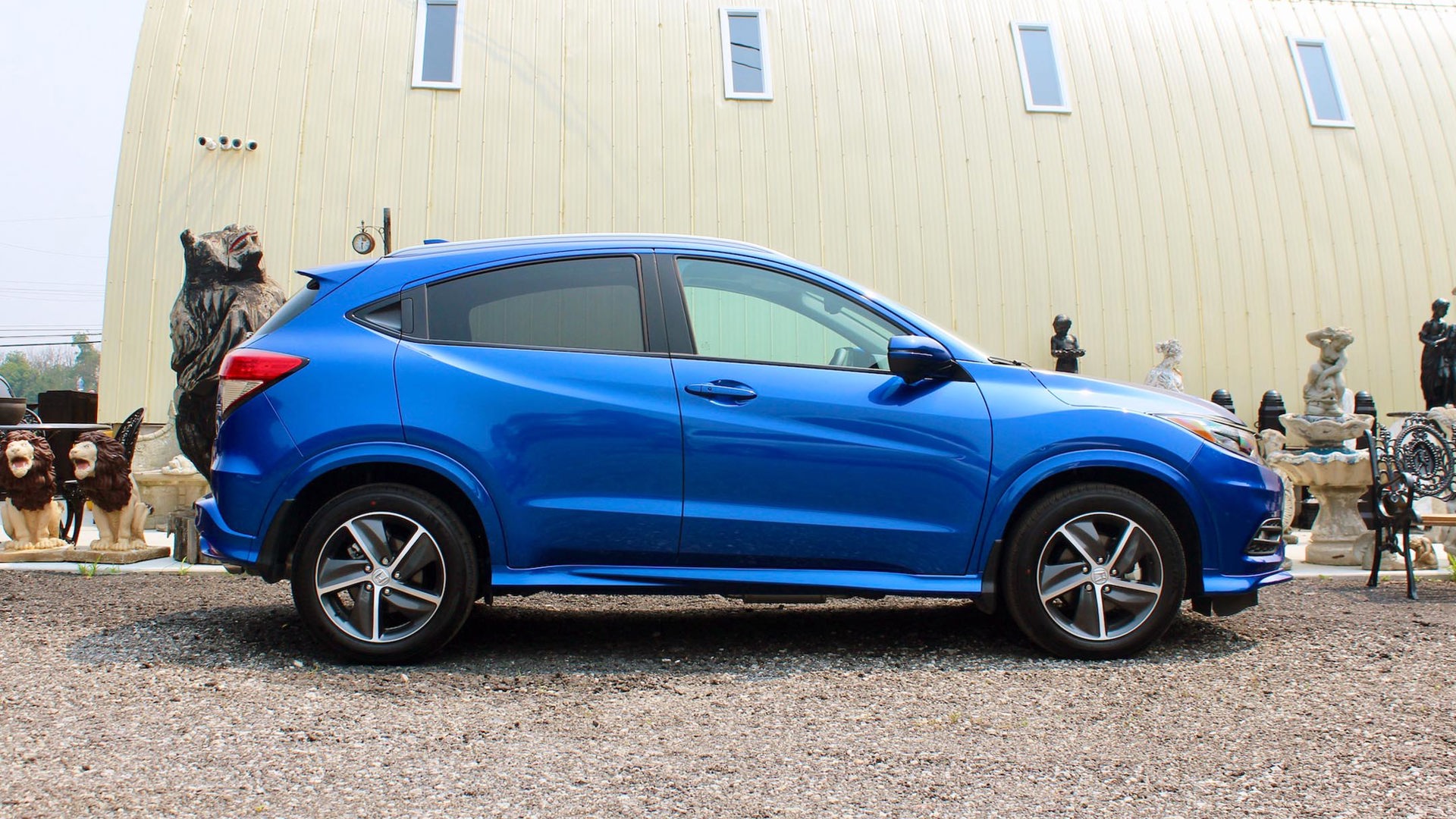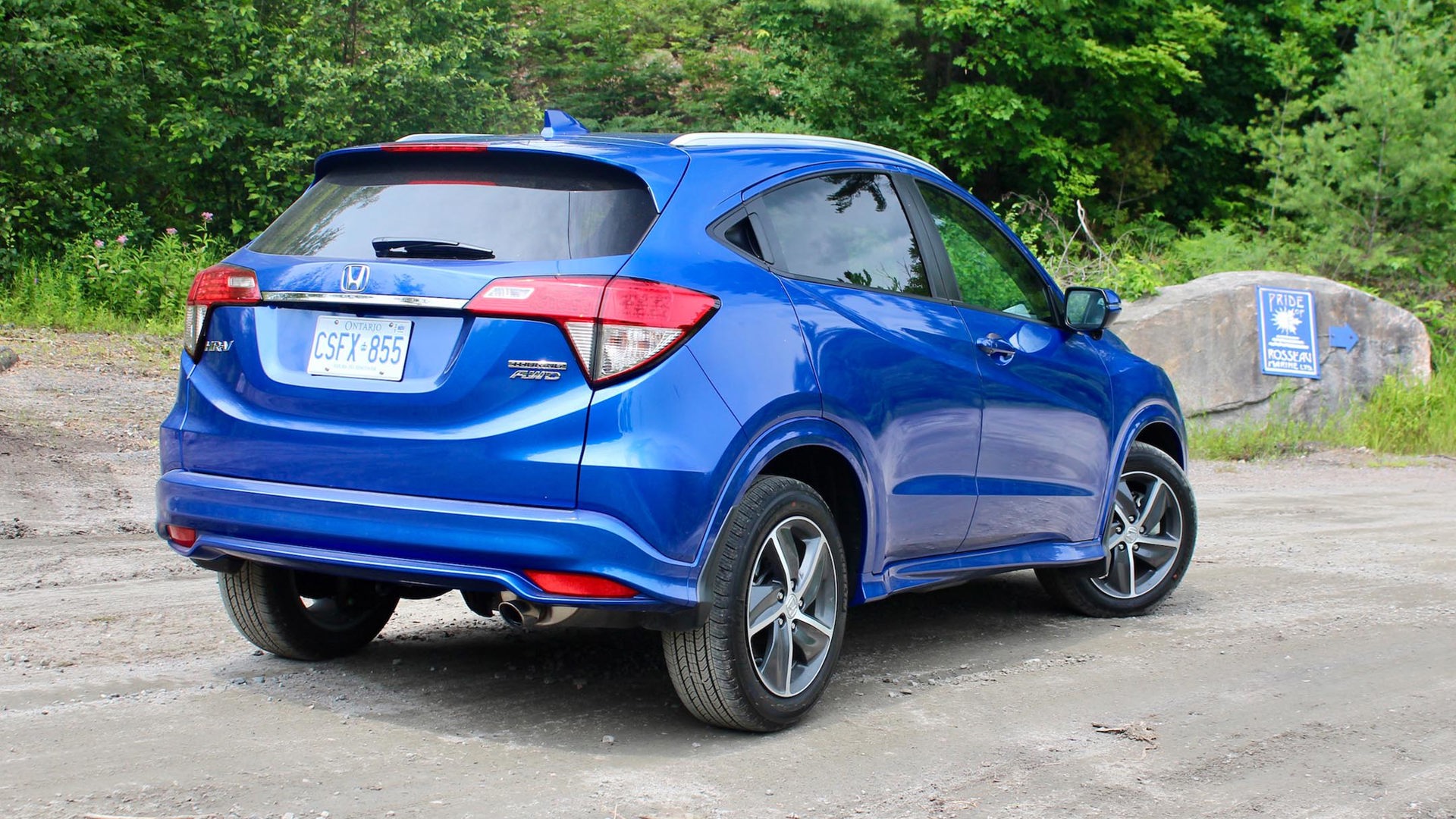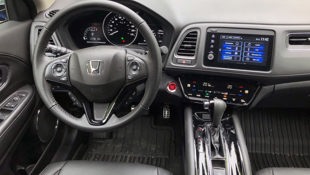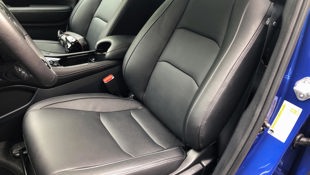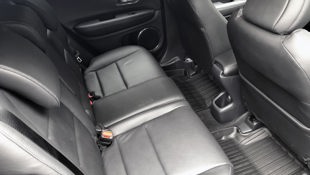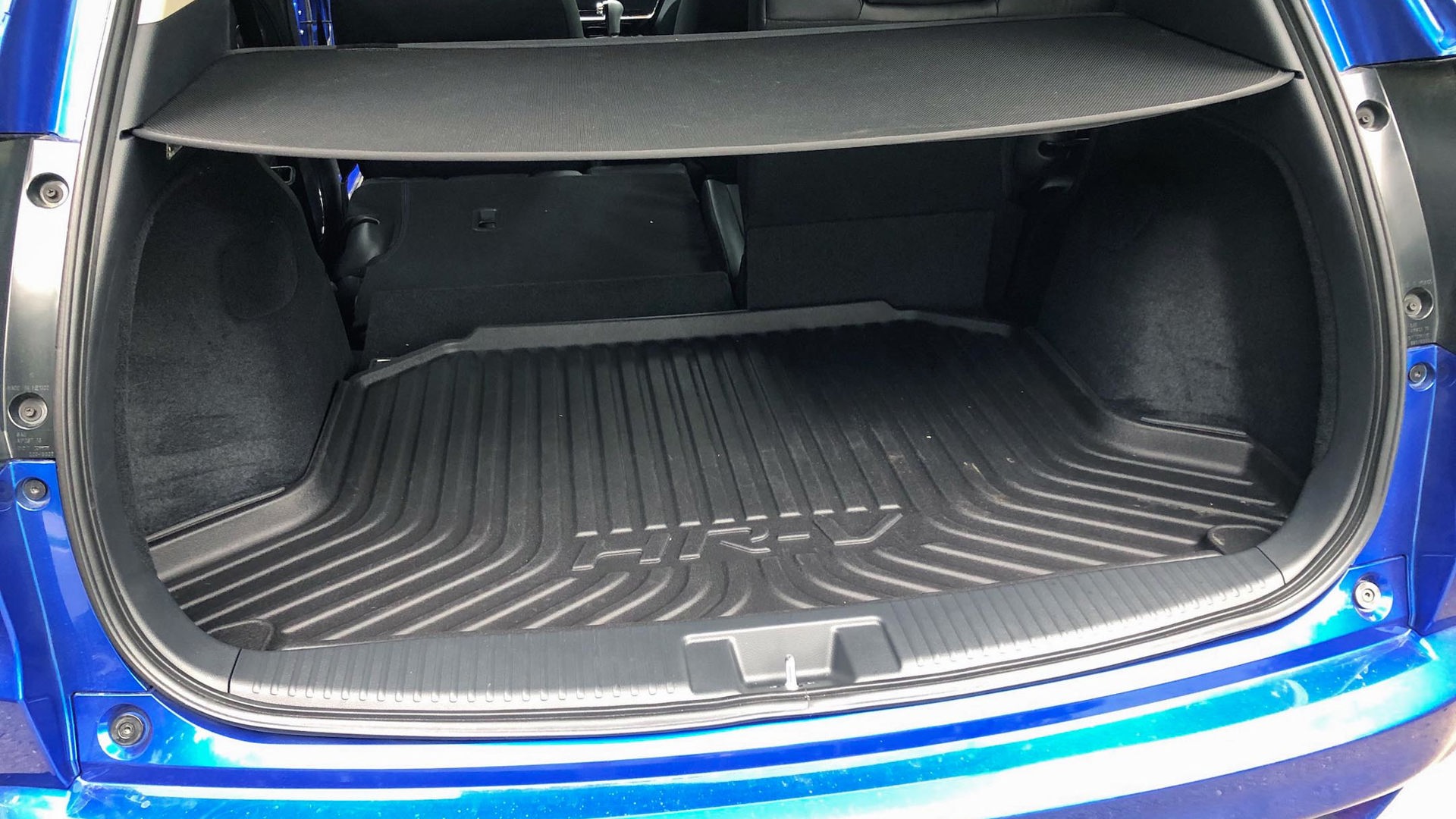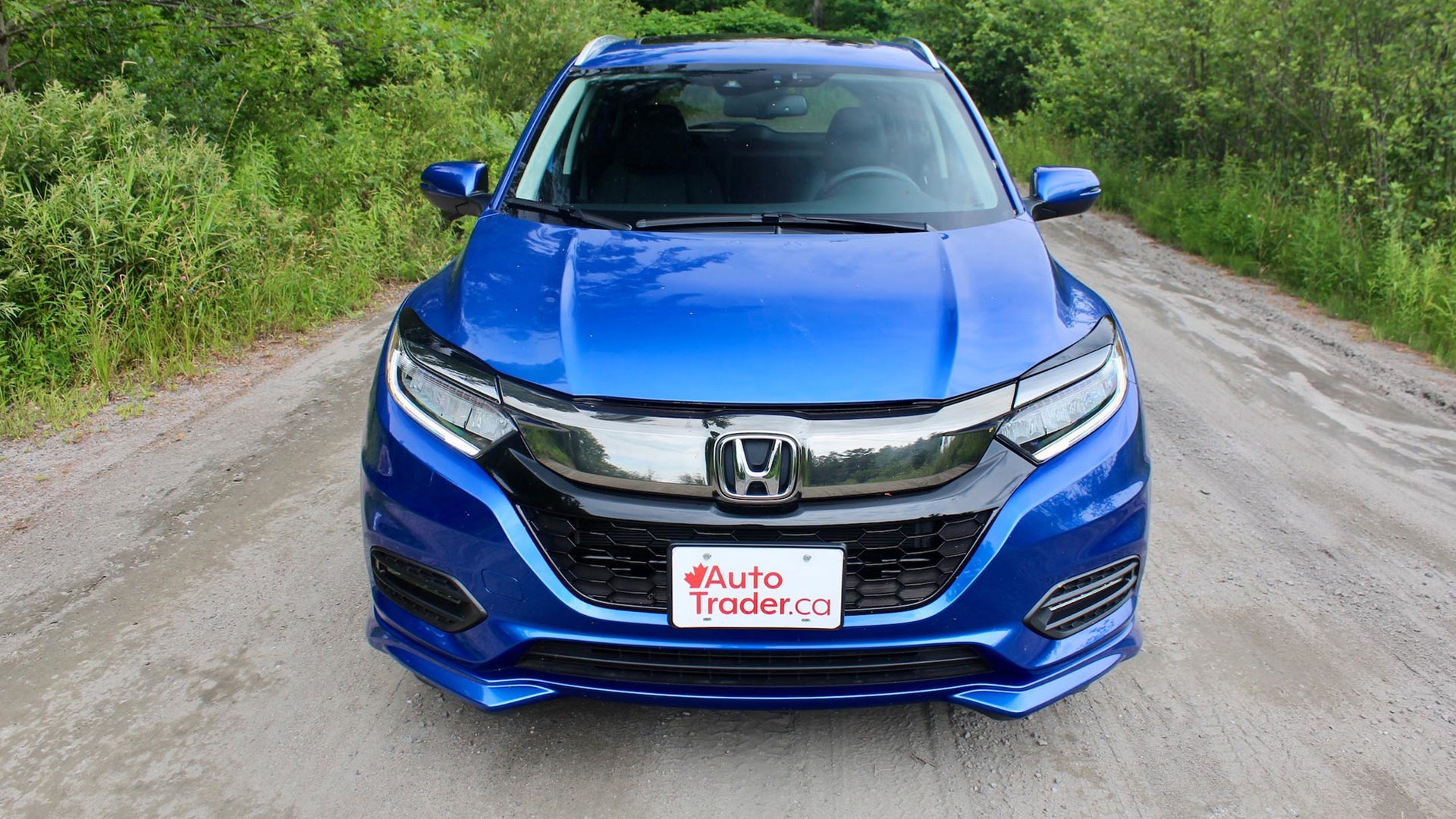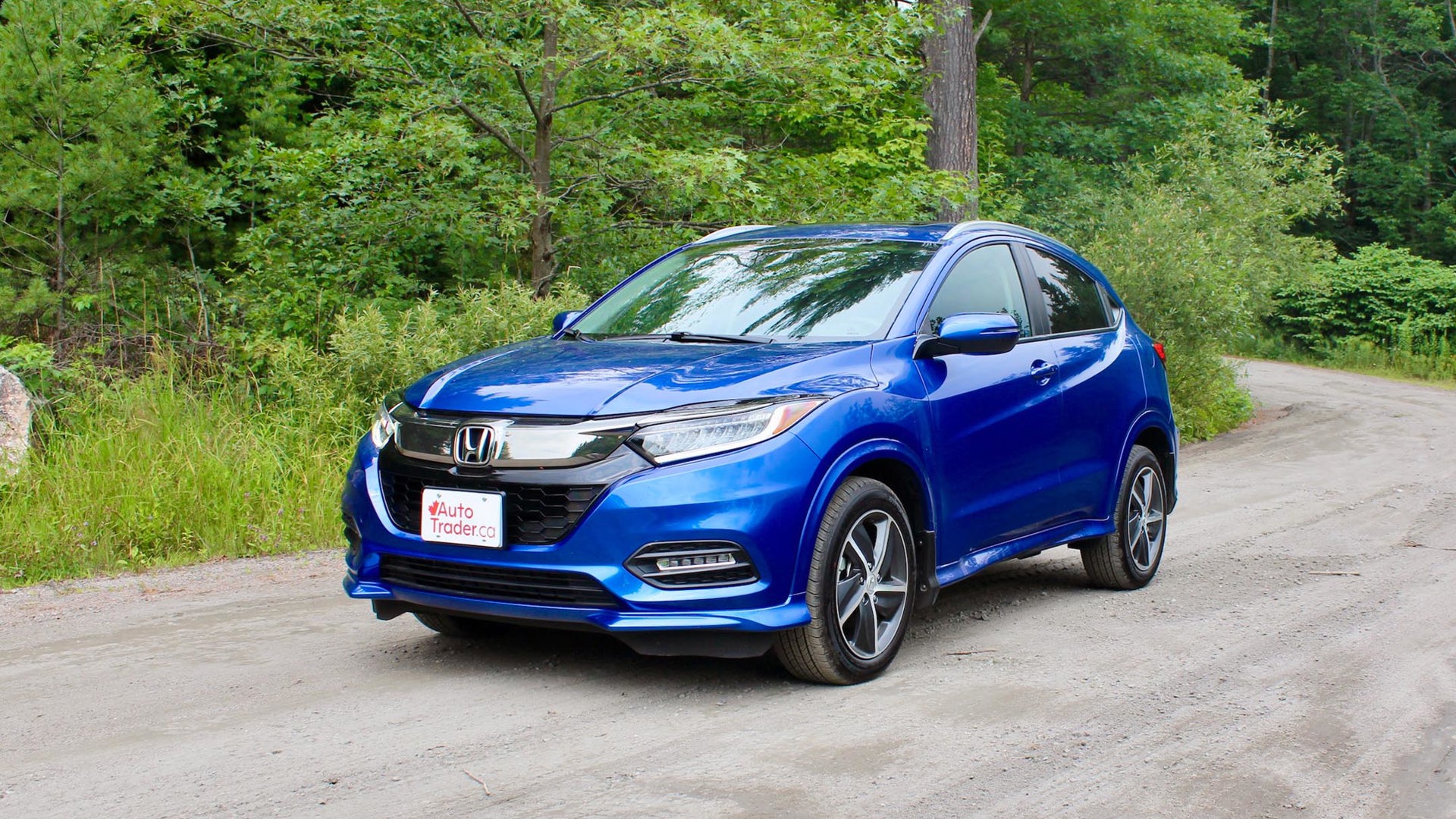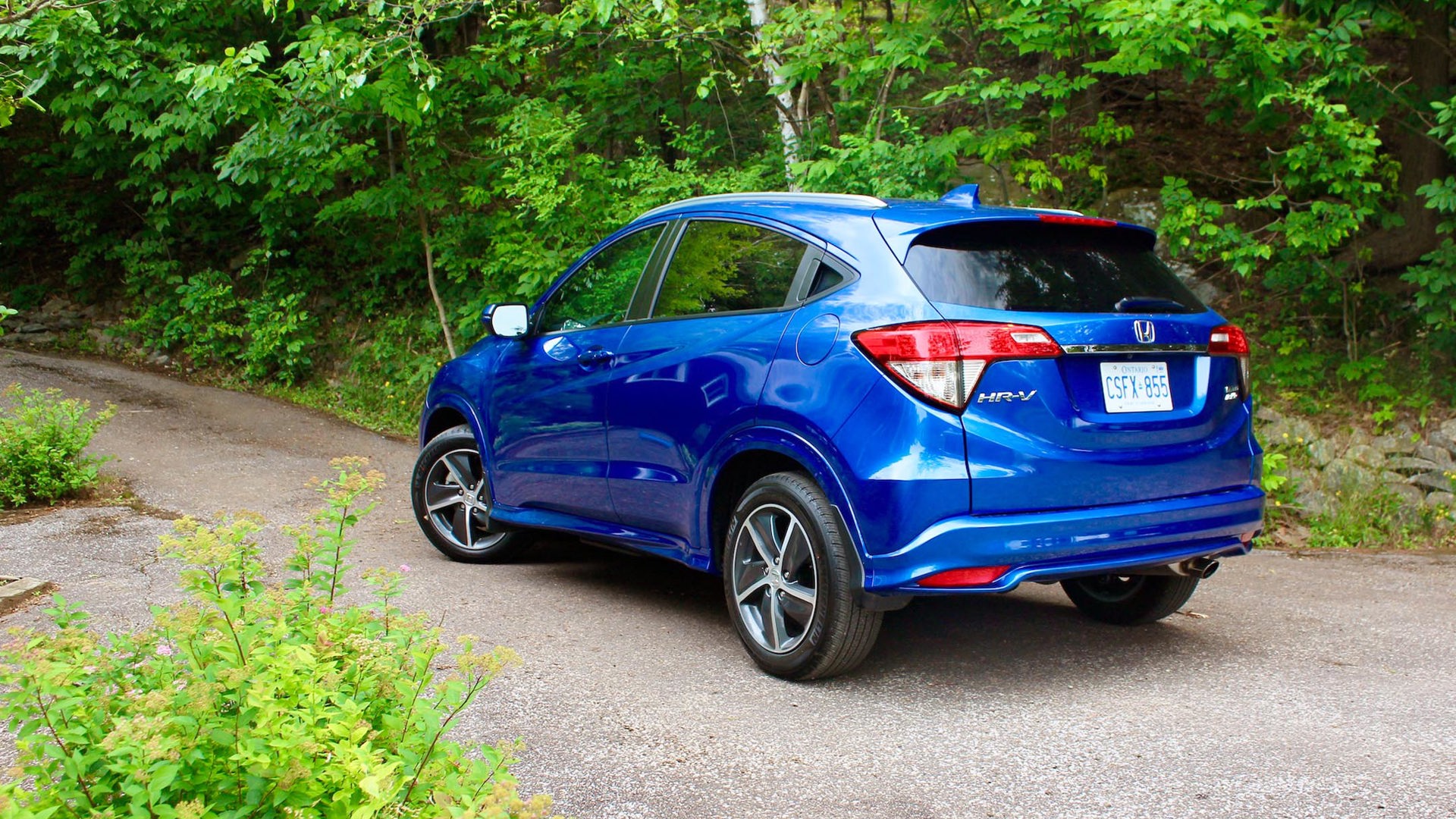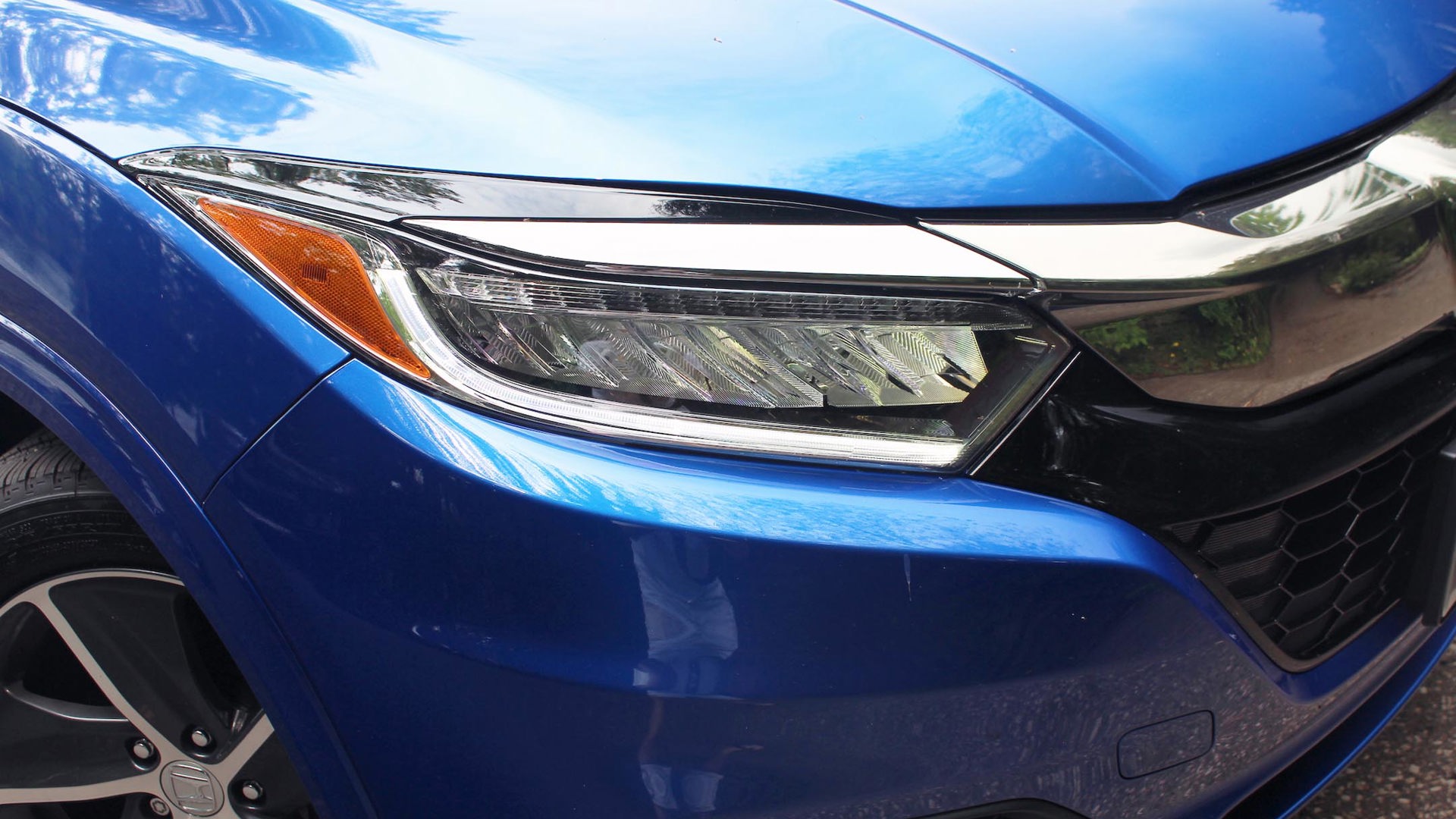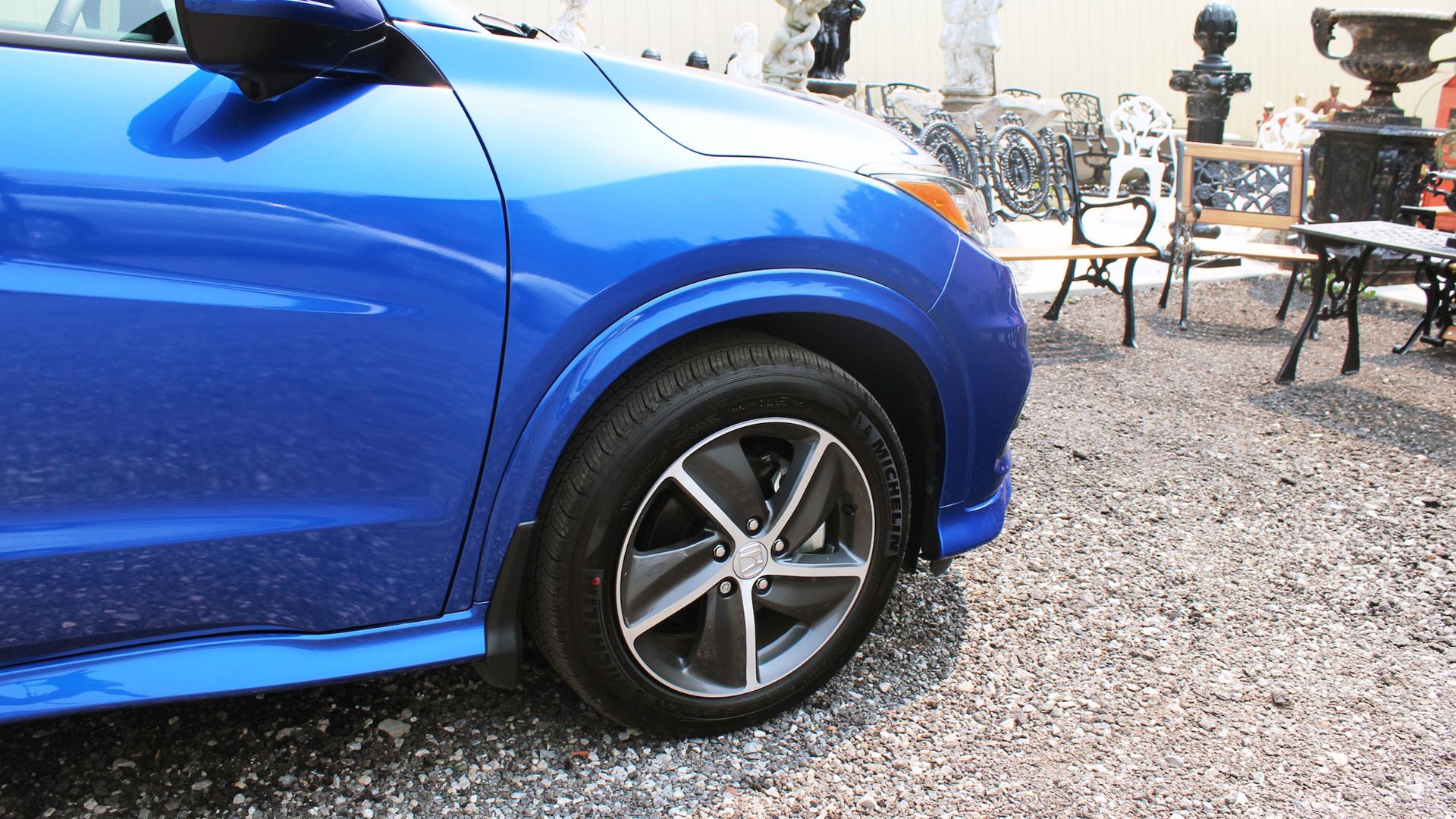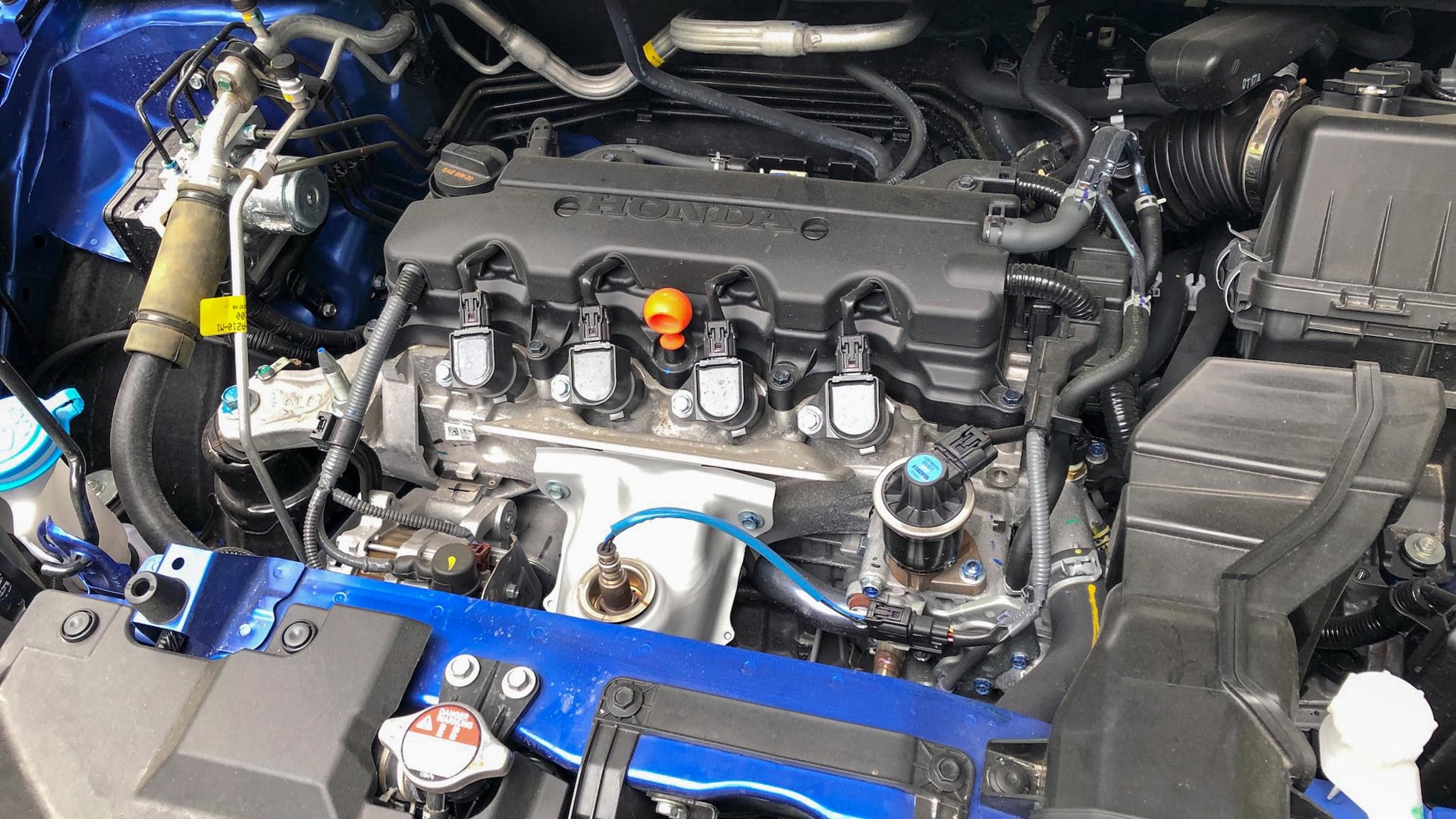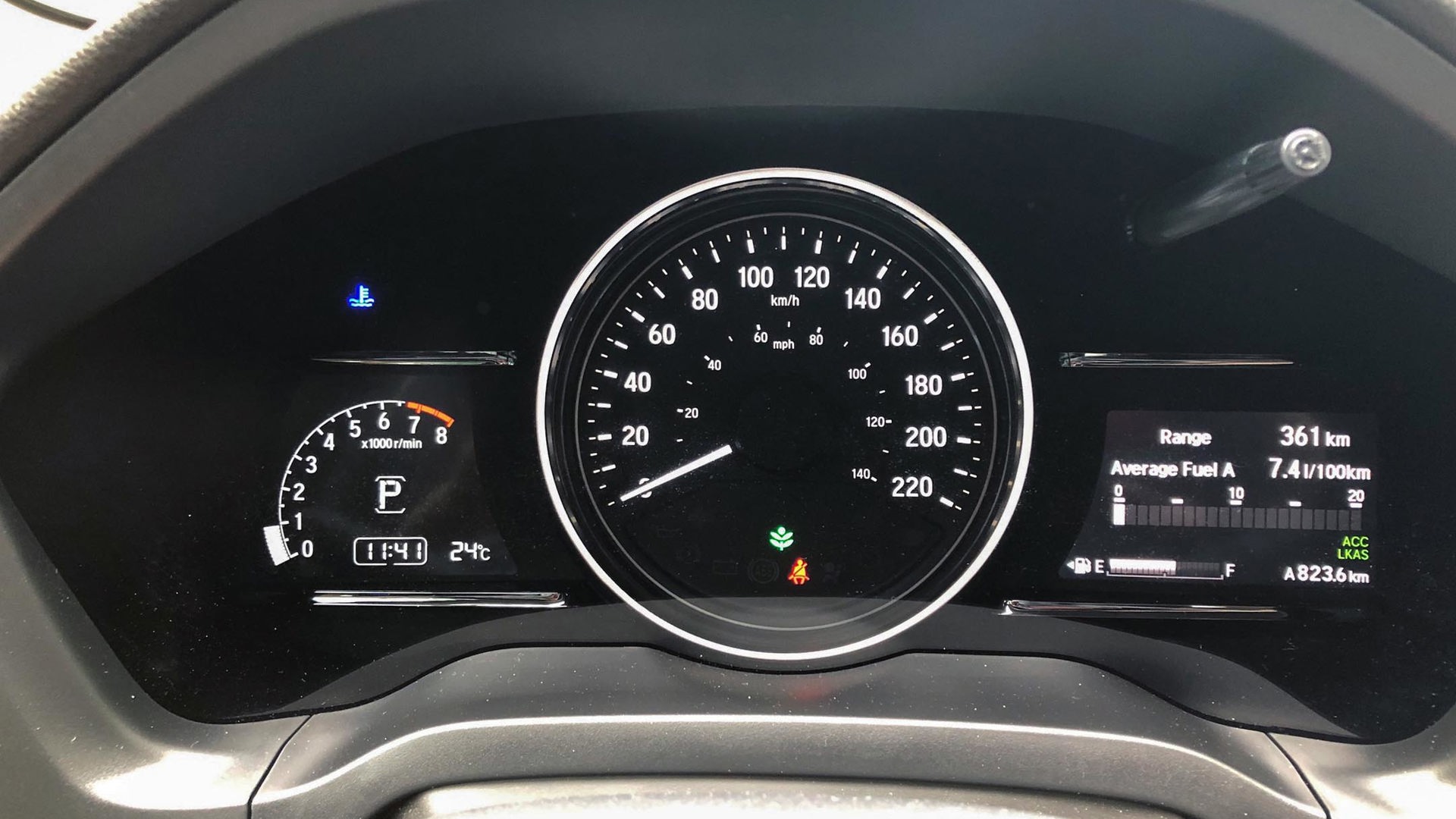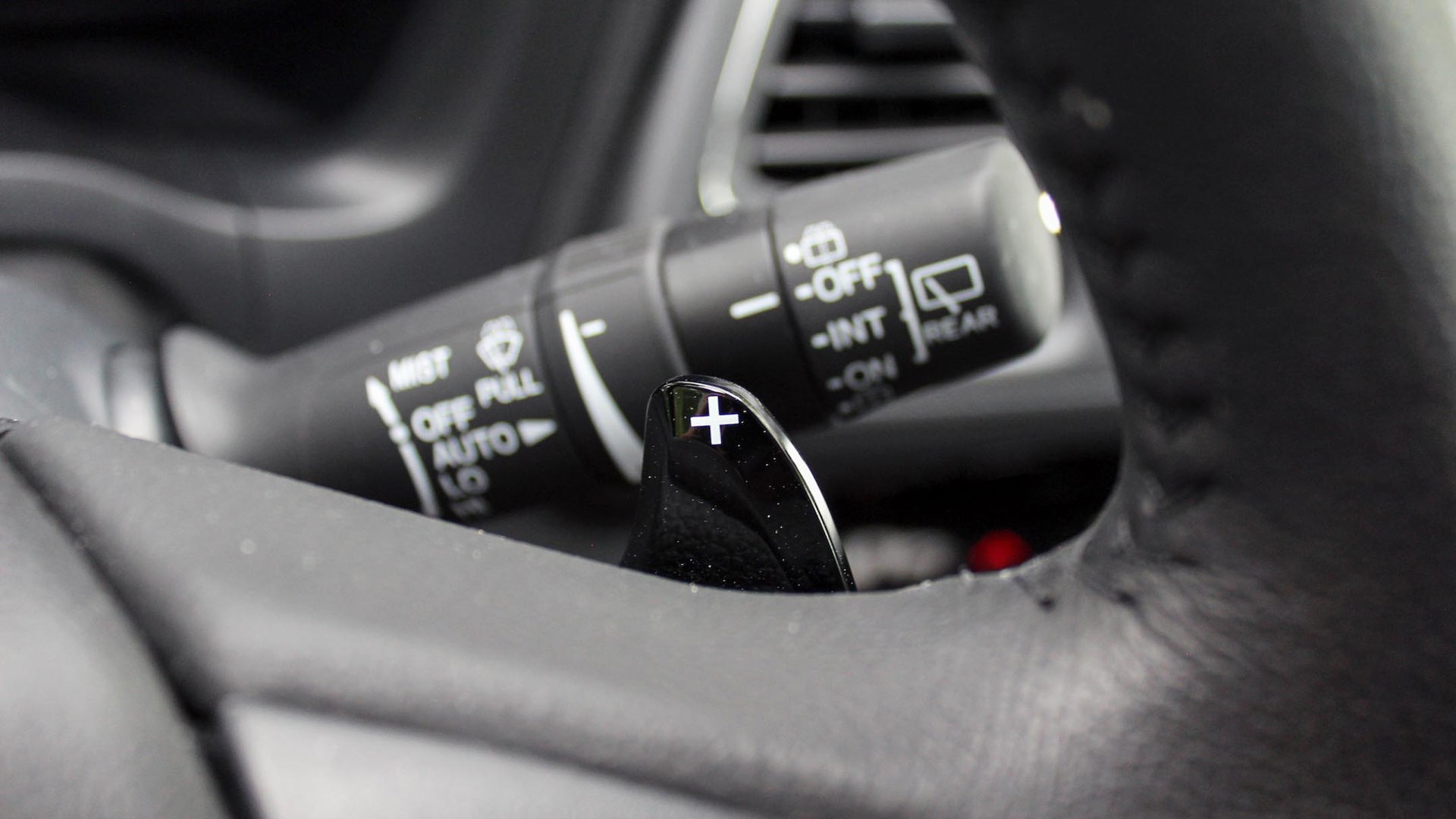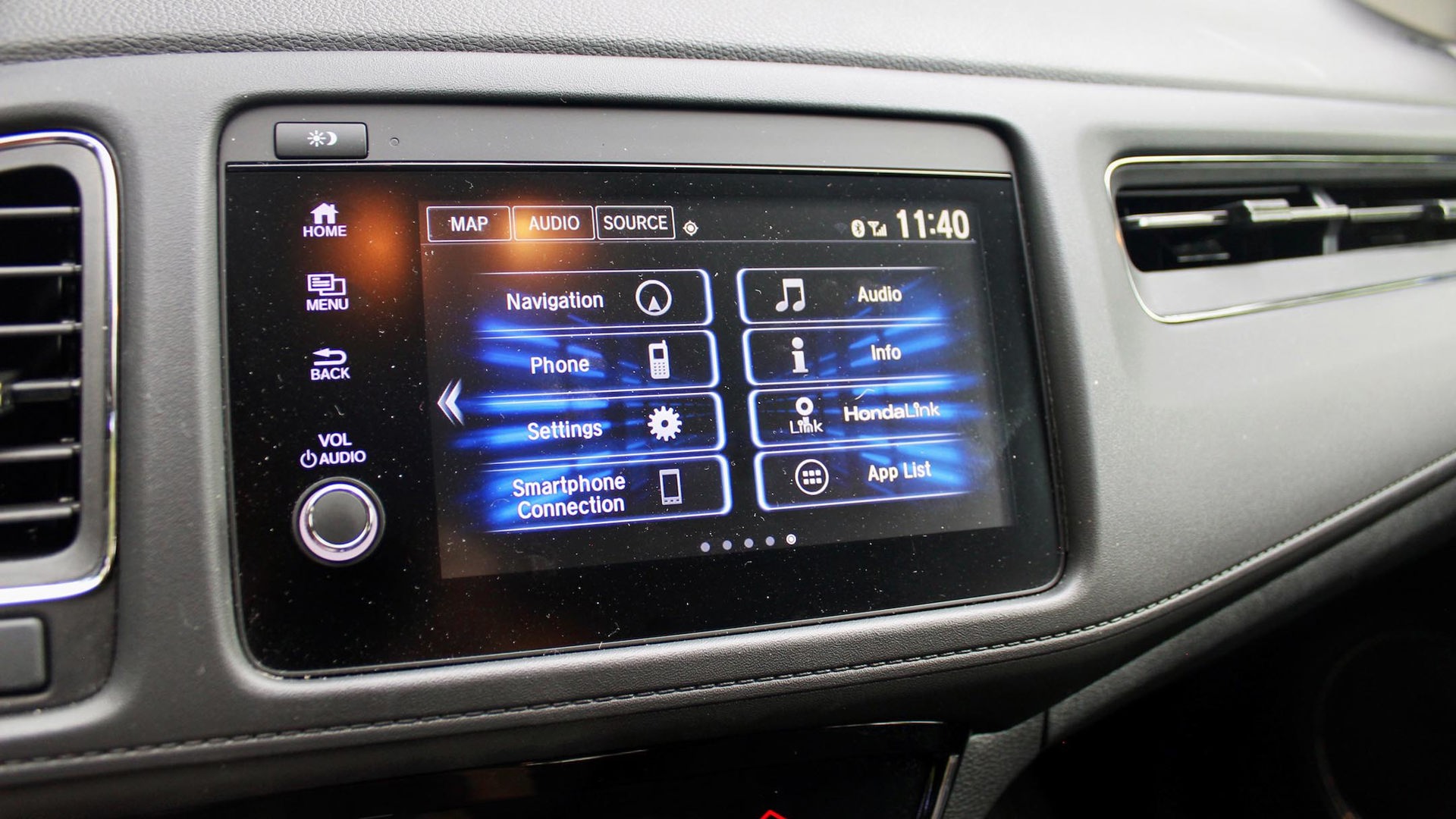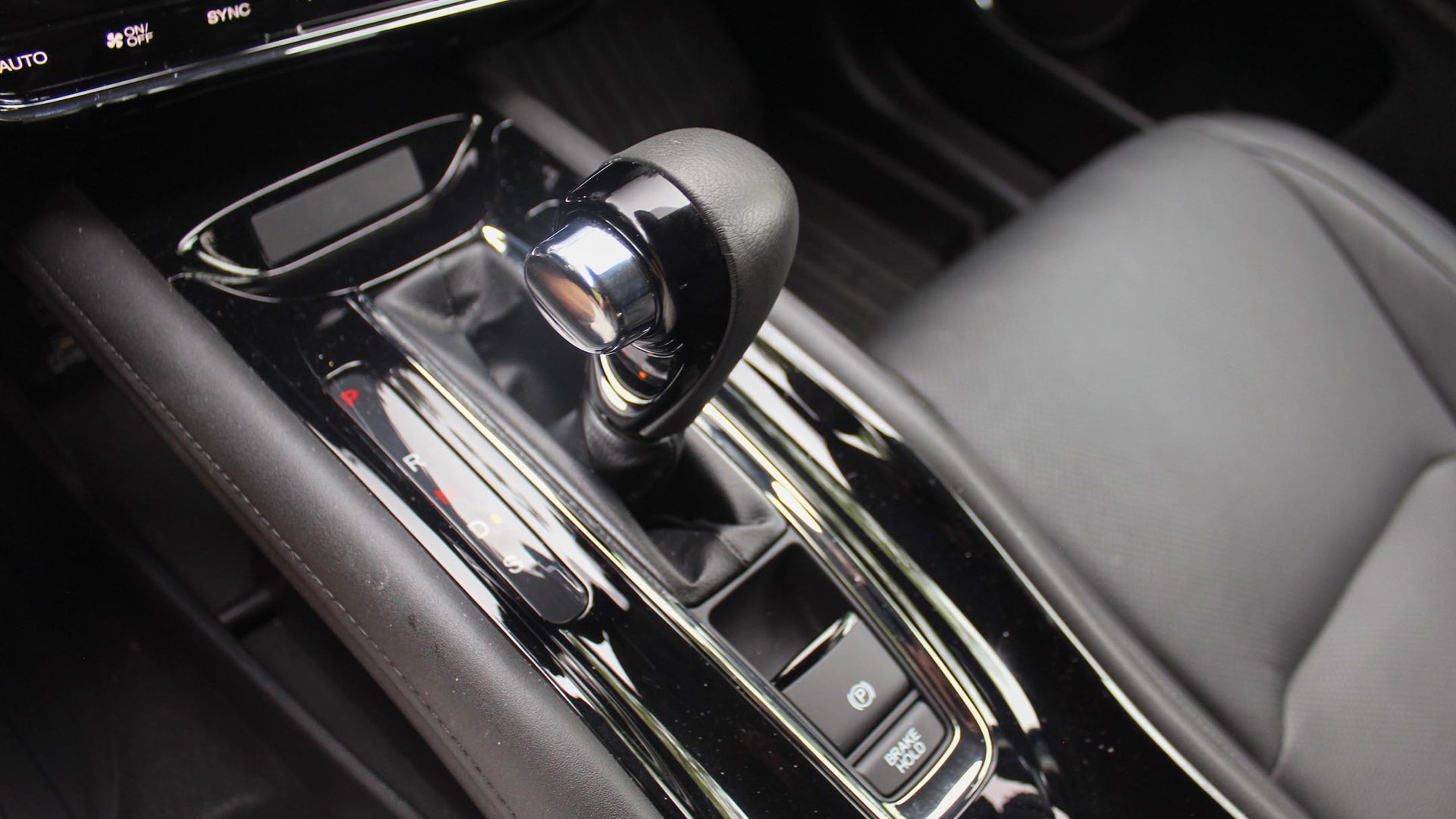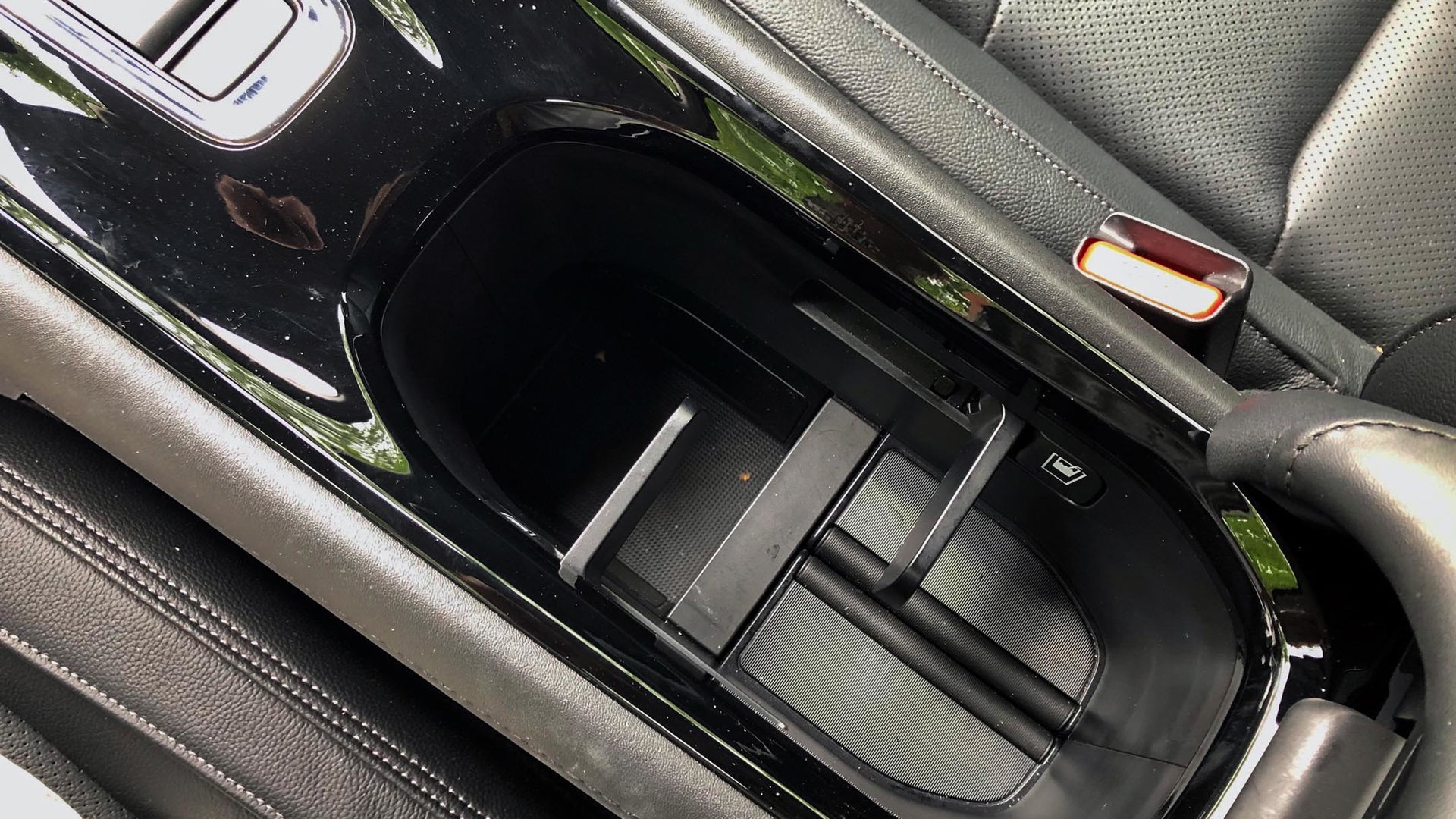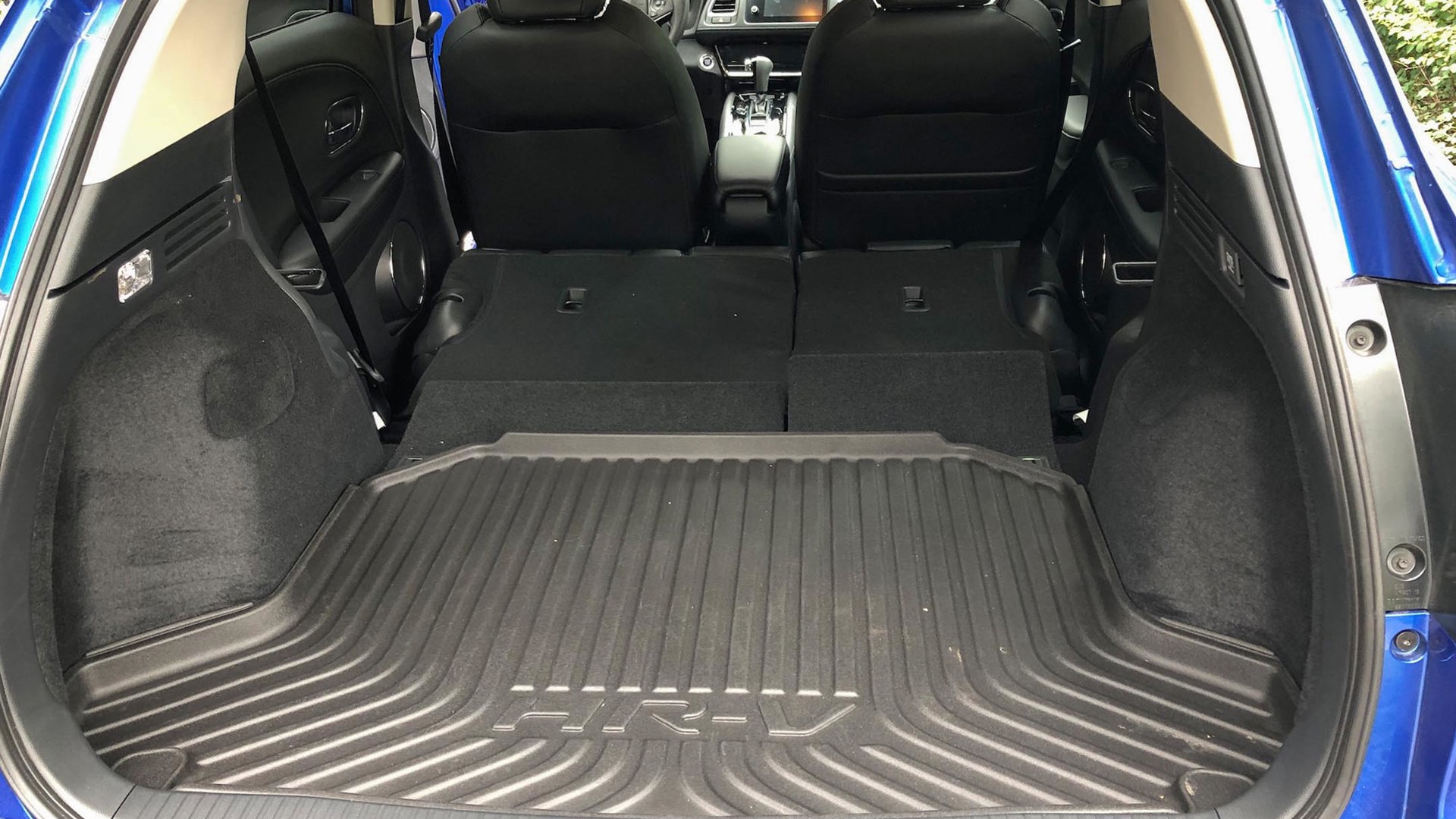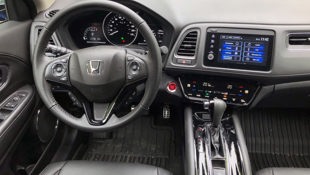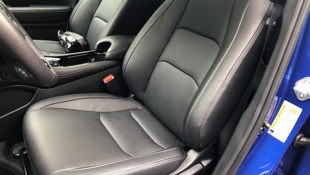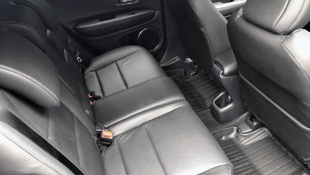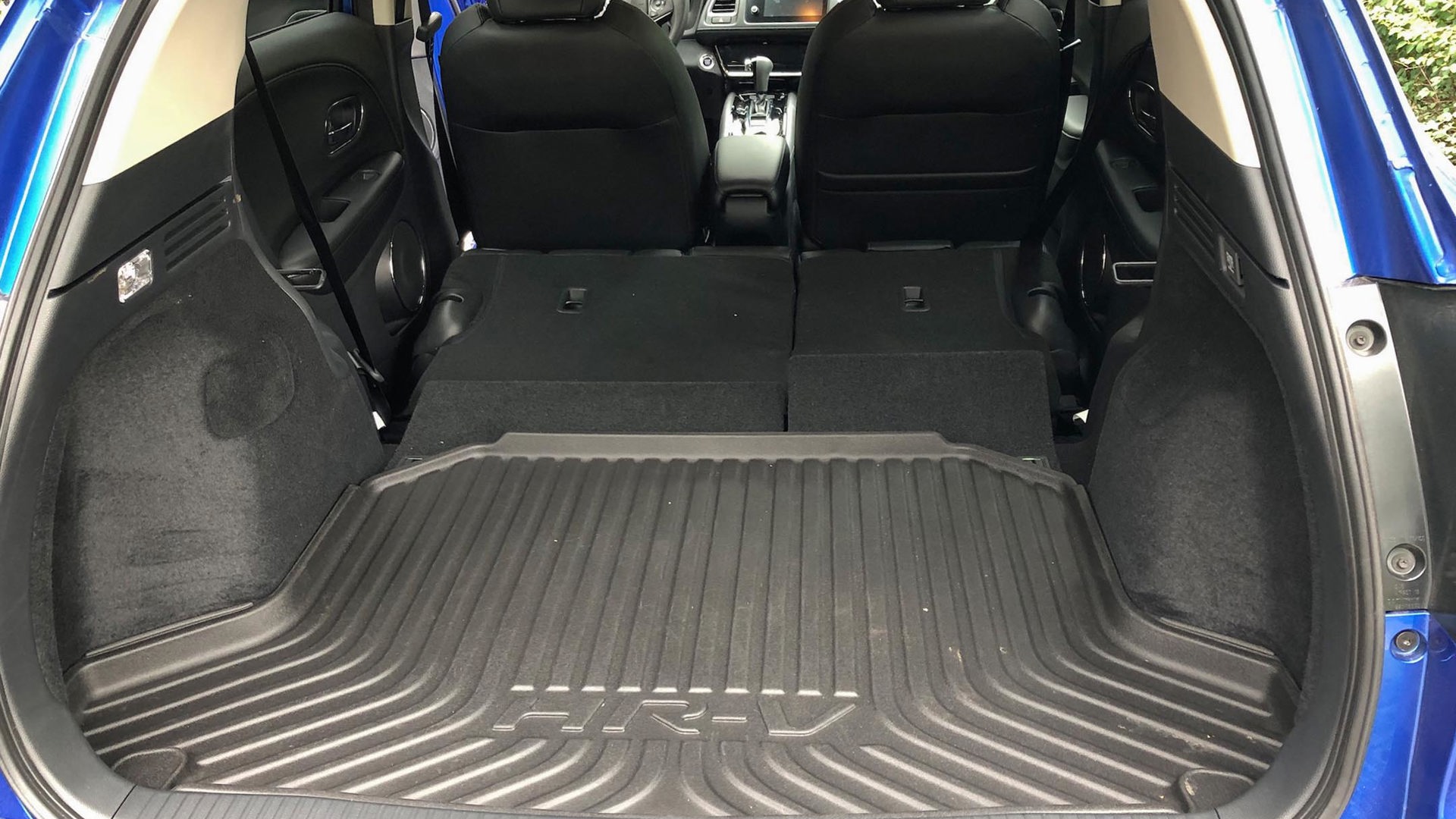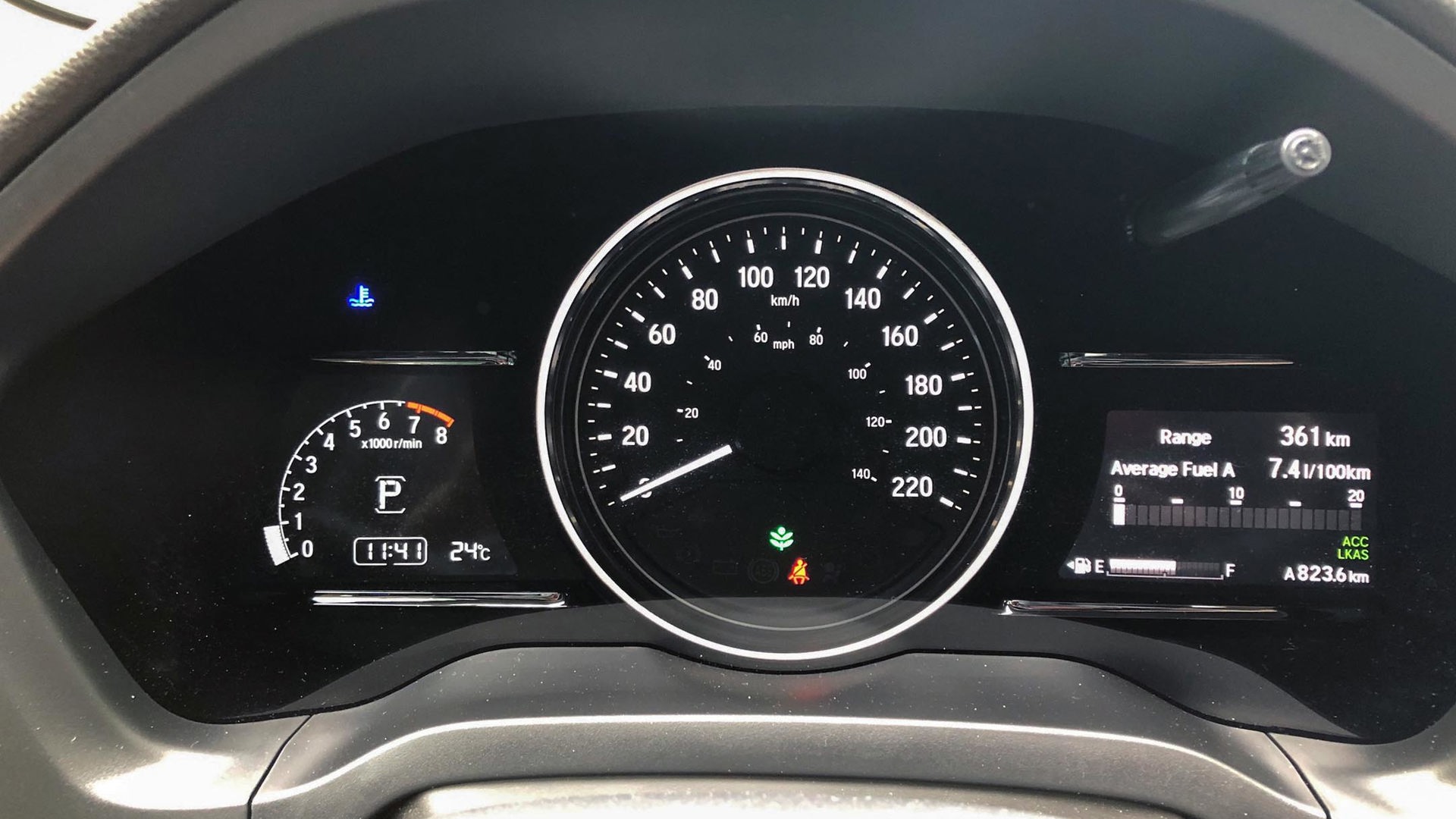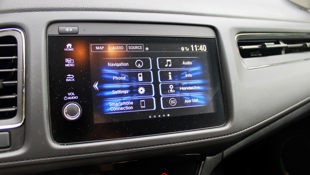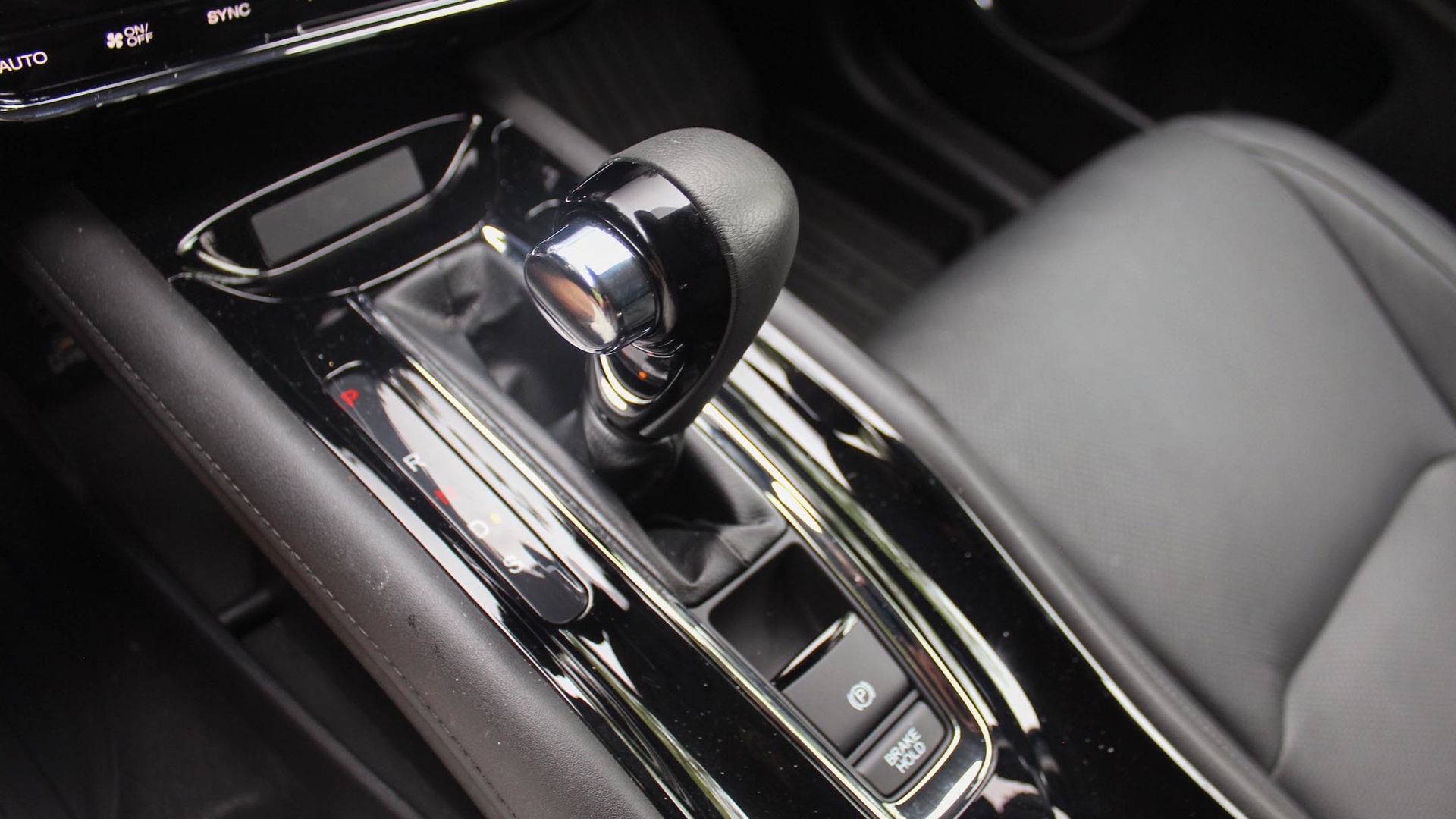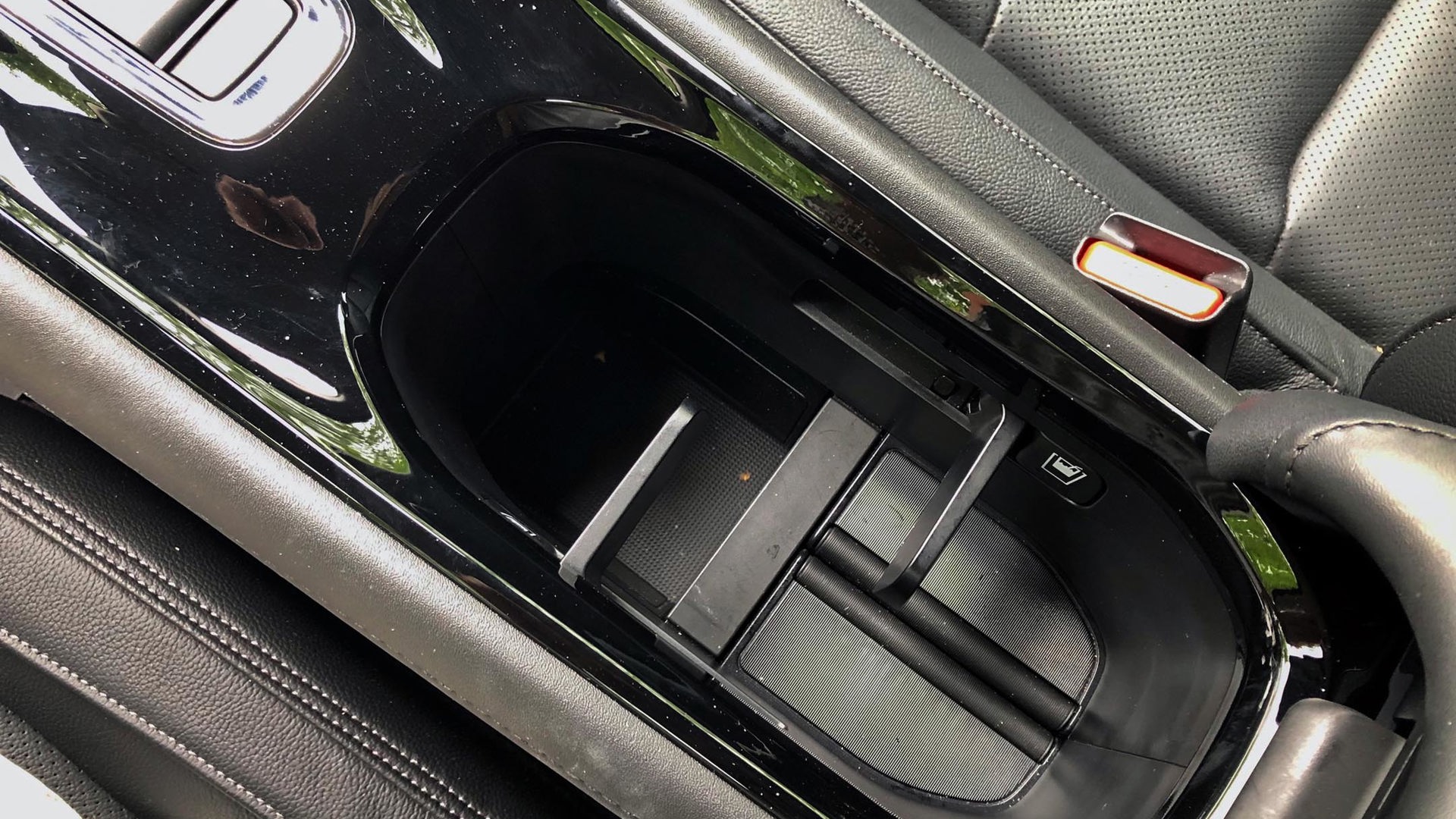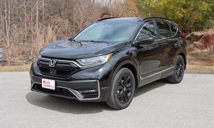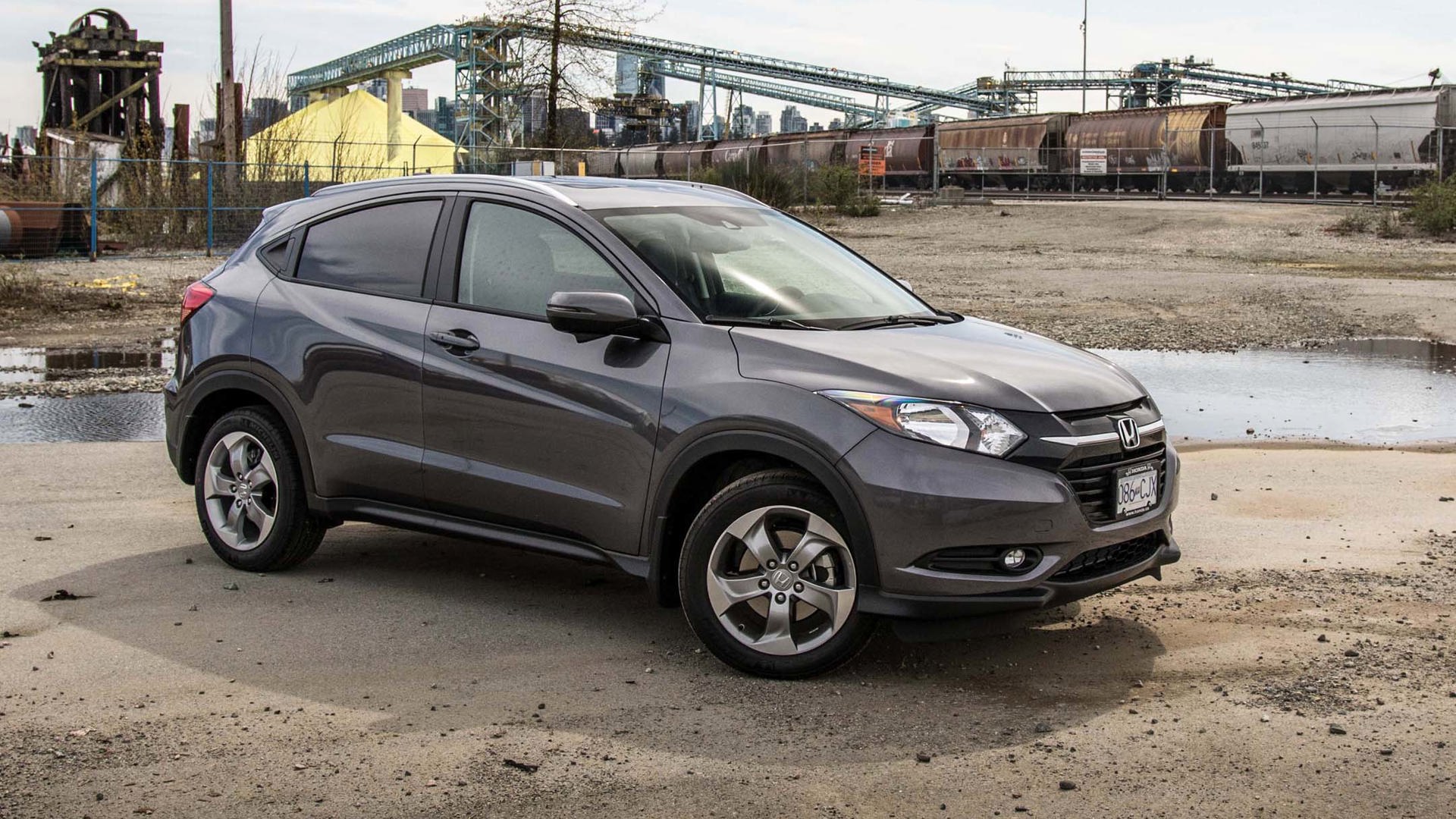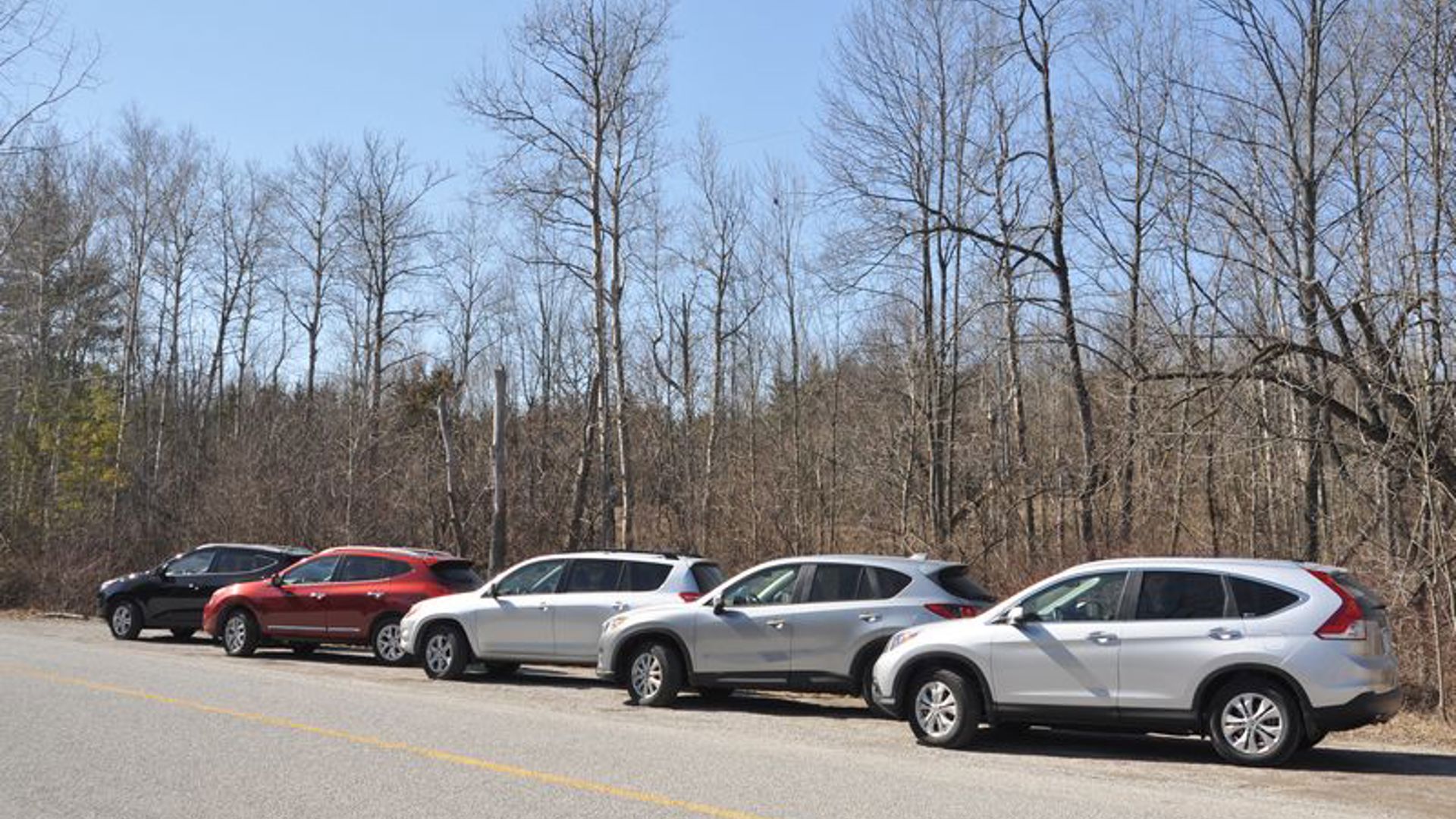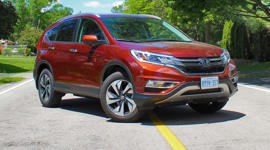 AutoTrader SCORE
AutoTrader SCORE
-
STYLING7/10
-
Safety8/10
-
PRACTICALITY8/10
-
USER-FRIENDLINESS7/10
-
FEATURES7/10
-
POWER6/10
-
COMFORT8/10
-
DRIVING FEEL7/10
-
FUEL ECONOMY9/10
-
VALUE7/10
The 2021 Honda HR-V is the brand’s smallest SUV, yet in this class of pipsqueak utes it offers impressive interior room while delivering a grown-up ride and quality build.
Styling: 7/10
With the current crop of subcompact crossovers using bold and funky designs to lure youthful buyers, the Honda HR-V walks its own no-flash path of conservative functionality. With that in mind, this top-tier Touring tester kicks up the visuals with Aegean Blue Metallic paint ($300) and some stylish 17-inch alloy wheels.
Safety: 8.5/10
All trim levels of the 2021 Honda HR-V come with an extensive list of safety features that includes automatic high-beams, forward collision warning and automatic emergency braking, lane-departure warning and lane-keep assist, and adaptive cruise control. The Sport and Touring models add Honda’s camera-based blind-spot display that shoots a live feed of the passenger side of the vehicle onto the infotainment screen when the right turn signal is activated. Honda is phasing this feature out in favour of sensor-based blind-spot monitoring.
The Honda HR-V gets a Top Safety Pick rating from the Insurance Institute for Highway Safety (IIHS) and a five-star overall safety rating from the United States National Highway Traffic Safety Administration (NHTSA).
Practicality: 8.5/10
Being based on the since-discontinued Honda Fit, the HR-V inherits some of that car’s impressive use of space. The HR-V is plenty roomy for a subcompact crossover, offering rear-seat passengers generous leg- and headroom. There’s also 657 L of cargo space behind the rear seats. This trumps the Mazda CX-30 (572 L) and Buick Encore (532 L), but falls behind the Nissan Kicks (716 L). The 60/40-split second row easily folds to create a flat floor, opening up 1,583 L in the process.
Like the Fit, the HR-V’s rear seat cushions can flip up, allowing tall items like bicycles and plants to slide in through the side doors. The HR-V’s door pockets are small, and there is an open cubby under the floating centre console but it’s hard to see and reach. The nifty bi-level twin cupholders behind the gear selector can accommodate all drink sizes while also doubling as a deep storage bin.
User Friendliness: 7/10
The 2021 Honda HR-V scores fairly well for logical ergonomics and easy familiarity, but we could ask for more knobs (specifically for radio tuning and temperature control).
Forward and side visibility is excellent thanks to slim front pillars, a low dashboard, and a large windshield.
Overall, the dash layout is good. In fine Honda tradition, the major gauge cluster in front of the driver is clear and well backlit, here dominated by a large central analogue speedometer flanked by a pair of digital readouts: tachometer, time, and temperature on left; multi-page information screen on right.
A haptic panel for HVAC sits below the infotainment screen, and on the centre console we find an old-fashioned analogue P-R-N-D gear selector. The infotainment system shows its age, however, being slow to react and having somewhat dated graphics. The voice control is not particularly intuitive or obedient, either.
Features: 7.5/10
This being the top trim, the Honda HR-V Touring is well equipped. Along with the aforementioned safety features, this model gets navigation and a decent-sounding 180-watt, six-speaker audio system with Apple CarPlay and Android Auto, as well as satellite radio and multimedia audio playback capability. There are two USB ports tucked under the floating console.
There is heat for the front seats (but not the steering wheel) and seating surfaces are leather. The two sun visor vanity mirrors gain illumination. Other Touring niceties include proximity key with push-button start, auto-dimming rearview mirror, dual-zone climate control, a sunroof, and rain-sensing wipers.
Power: 6.5/10
Doing duty here is a 1.8L naturally aspirated four-cylinder engine mated to a continuously variable transmission (CVT). Rated at 141 hp and 127 lb-ft of torque, this engine feels underpowered and get raucous when pressed, a situation exacerbated by the CVT that, in its noble mission of keeping the engine in its power zone for best fuel economy, has the four-pot droning away when calling for acceleration. It’s underwhelming at best. Highway merging and passing require one’s foot to hit the floorboards.
It all settles down once up to speed, but even then the revs are fluctuating as the topography changes. The HR-V seems happiest running about town.
Comfort: 8/10
For this class of vehicle, the Honda HR-V Touring scores well, and this all stems from its solid structure, well-built interior, comfortable and roomy seating (both front and back), and smooth and quiet ride. In this respect, HR-V feels mature and well-engineered. Despite its general lack of power, the HR-V does make for an agreeable long-distance tourer. The auto-climate control distributes the air evenly and maintains cabin temperature well. Additionally, the Touring gets active noise cancellation, which helps with managing wind and road noise.
Driving Feel: 7.5/10
The HR-V is far from sporty, but it does exhibit Honda’s signature dynamic cohesiveness that makes it a pleasure to drive. The ride is compliant, the steering is accurate and naturally weighted, and while its handling limits are low, the HR-V carves an accurate path through bends and tracks true on the highway. Unfortunately, the underpowered engine and CVT combo take the sheen off the experience, but this is the price one pays for heartwarming fuel economy.
Fuel Economy: 9/10
Some 1,200 km was racked up during testing, with the majority being highway and secondary road travel. It netted 7.5 L/100 km (regular grade fuel), which beats the official figure of 8.5 combined.
Value: 7.5/10
Shelling out almost $36,000 before tax for this Touring trim is not the most pragmatic way to get into the Honda HR-V. The $32,300 Sport is mechanically identical and gets the nice 17-inch alloys and all the safety kit, but lacks leather and few other bobbins. However, the thorn in the side here for Honda comes from Korea. Look at the newer offerings in this segment from Kia and Hyundai (Seltos, Kona, Tucson, Venue, Soul) and this aging Honda’s value proposition fades somewhat. It shows in the Canadian market, where for every HR-V Honda sells Kia sells two Seltoses and Hyundai sells three Konas.
The Verdict
The Touring trim is as luxurious as it gets with the 2021 Honda HR-V, and in that respect it does a decent job of turning this compact ute into a near-luxury experience – lack of heated steering wheel aside, of course. Despite having been around for six years or so, the HR-V is still a viable entrant in this growing category, impressing with its capacious and versatile load space, good fuel economy, and fine handling. The HR-V may not be as flashy or as fast as some of its newer competitors, but it has a sense of solidity and proven Honda reliability in its corner.
| Engine Displacement | 1.8L |
|---|---|
| Engine Cylinders | I4 |
| Peak Horsepower | 141 hp @ 6,500 rpm |
| Peak Torque | 127 lb-ft @ 4,300 rpm |
| Fuel Economy | 9.1 / 7.7 / 8.5 L/100 km cty/hwy/cmb |
| Cargo Space | 657 / 1,583 L seats down |
| Model Tested | 2021 Honda HR-V Touring AWD |
| Base Price | $33,700 |
| A/C Tax | $100 |
| Destination Fee | $1,700 |
| Price as Tested | $36,322 |
|
Optional Equipment
$822 – Aegean Blue Metallic, $300; Protection Package, $522
|
|

